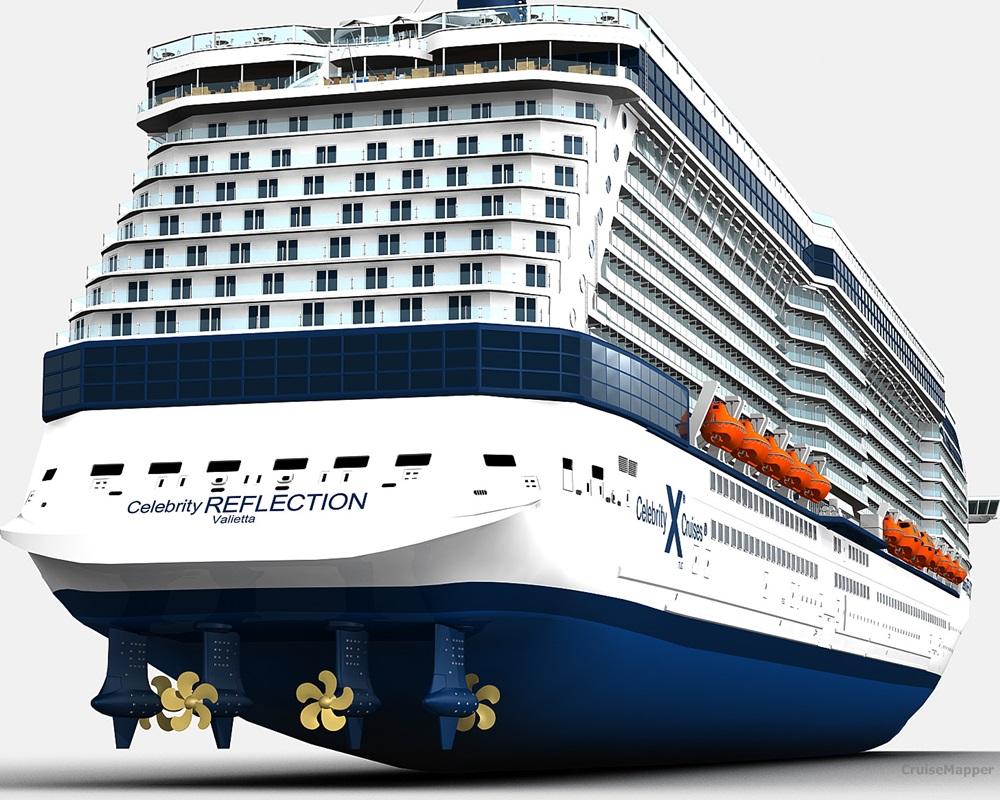New cruise ships feature “diesel electric” propulsion. So rather than being connected to the propeller shafts, the main engines are connected to large generators in order to produce electricity. This electricity is sent to electric motors, which powers the propellers and moves the ship.
Quick Navigation
1. Steam Power
In the past, steam power was the primary source of propulsion for ocean liners. These vessels were equipped with large boilers that would heat water to produce steam. This steam was then directed into massive turbines, which converted the steam’s energy into rotational motion. This motion was then used to turn the ship’s propellers, creating forward thrust.
While steam power was once popular, it has become less common in modern ocean liners. However, some historic ships, like the RMS Queen Mary, still serve as reminders of the golden age of steam-powered ocean travel.

Credit: www.cruisemapper.com
2. Diesel Engines
Today, most ocean liners are powered by diesel engines. These engines work similarly to those found in cars, using the combustion of diesel fuel to generate power. The energy produced by the diesel engine is then transmitted to the ship’s propellers through a system of gears and shafts.
Diesel engines are efficient, reliable, and capable of generating significant power, making them an ideal choice for ocean liners. These engines can be found in both traditional ships and modern cruise liners, such as the famous Queen Mary 2.
3. Gas Turbines
Gas turbines are another type of engine used to power ocean liners. These turbines work by burning fuel, usually natural gas or diesel, to produce high-velocity gases. The gases then pass through a series of turbine blades, causing them to spin rapidly.
The spinning turbines are connected to a gearbox, which drives the ship’s propellers. Gas turbines are known for their high power-to-weight ratio, making them popular in faster, high-speed ocean liners.
4. Nuclear Power
While not as common, some ocean liners are powered by nuclear reactors. These reactor-powered ships use the heat generated by nuclear fission to produce steam, which is then used to drive turbines and propel the vessel.
Nuclear power offers several advantages, including lower fuel costs and reduced carbon emissions. However, due to safety concerns and the complexity of nuclear technology, only a few ocean liners have been powered by nuclear reactors – most notably, the iconic RMS Queen Elizabeth 2.

Credit: robbreport.com
Frequently Asked Questions:
How Are Ocean Liners Powered?
Ocean liners are powered by engines that run on various fuels such as diesel, gas, or electricity. These engines provide the necessary force to move the ship through water.
What Type Of Engines Do Ocean Liners Use?
Ocean liners typically use either diesel engines or gas turbines to generate power. Diesel engines are preferred for their fuel efficiency, while gas turbines provide more speed and acceleration.
How Do Diesel Engines Work On Ocean Liners?
In diesel engines, fuel is injected into the combustion chamber where it ignites and creates pressure. This pressure then moves a piston, converting the energy into rotational motion that powers the ship’s propellers.
What Are The Advantages Of Using Gas Turbines In Ocean Liners?
Gas turbines are compact, lightweight, and offer high power-to-weight ratios, making them ideal for ocean liners. They provide quick response, high acceleration, and are more fuel efficient at higher speeds.
You might also like to read:
Conclusion
Ocean liners rely on various sources of power to traverse the vast expanses of the world’s oceans. From steam power and diesel engines to gas turbines and even nuclear reactors, these incredible vessels continue to push the boundaries of maritime engineering.
As technology advances, we may see new and innovative propulsion systems emerge, enabling ocean liners to become even more efficient and environmentally friendly. Regardless of the type of power used, ocean liners will always represent the pinnacle of human ingenuity and our capacity for exploration.
